Creative Solutions to Unexpected Challenges
“It wasn’t until after the dust had settled that I realized the level of extra effort that Alan had put in, and the ethical and professional standard that the Source upholds. If problems arise in production – they do not become yours. Alan Harris’ word is good, always.”
MarkeTeam
Sometimes, it’s a print vendor’s response to unexpected challenges that can change a print job from one that’s merely demanding into one that’s industry recognized.
MarkeTeam, an Orange County-based sales promotion agency serving the Leisure and Food & Beverage industries, approached the Source – printing made Easy about the printing of a poolside menu for Hyatt Hotels. It was understood that the client would only be making minor changes to an existing menu.
Designed for an outdoor and potentially damp environment, the existing piece was both water resistant and extra thick. It also included a chain lanyard to anchor the menu to poolside furniture.
To address the issues of water resistance and durability, the existing menu had been printed on two sheets of rigid polypropylene. The two sides were then adhered together with high-tack tape. A dark border around the edge of the piece hid the tape from view.
the Source submitted a bid for the job based on the existing sample: 15 mil rigid polypropylene covered with two hits of opaque white, with the balance of the artwork – including the darker border — printed in four color process. the Source was awarded the project, and MarkeTeam and Hyatt began working with designers to update the piece.
An Unexpected Change in Design
In the process of updating the piece, the designers decided to remove the dark borders on the outside shell. Hyatt Hotels liked the new look, and ended up approving a new borderless design as opposed to a simple update of the existing sample.
MarkeTeam presented the new borderless artwork to the Source. This created an immediate dilemma. The original bid had been based on the idea that the adhesive would be covered with a dark border. the Source would need to determine an alternate method for concealing the adhesive with minimal cost increase. Because the project specifications had been changed, the Source did have the option of returning the print job, but they decided to move forward.
the Source decided to add four additional hits of opaque white, increasing the total number of base layers to six. A test run was printed. The client approved of the initial unassembled pieces. Once a sample was constructed, however, it became obvious that more white would be needed to hide the adhesive.
Going Beyond Specifications and Expectations
After some trial and error, the Source determined that three passes of white silkscreen would be the most attractive and cost-effective way to achieve the client’s revised requirements. Another sample was generated, the client gave their approval, and the print job was able to proceed.
After the polypropylene sheets were printed, the project was ready to be handed off to a finisher for pre-trimming, die-cutting, stripping, taping, and the finish-cut. It quickly became apparent that this process would present its own set of challenges.
Another Unexpected Hurdle
To successfully trim the pieces, the die cutting edges had to be much sharper than is required for standard die-cutting applications. If the blades were or if there was any movement on the “gripper” edge, the print and screen would lift off the substrate resulting in an undesired “air bubble” effect.
Representatives of the Source personally supervised the finishing process for nearly two thirds of the menus. As the job slowly progressed, however, quality issues resulted in the rejection of a substantial number of menus. With the project deadline looming, the Source realized that they would need to both quickly reprint a large quantity of the menus and figure out a way to accelerate the finishing process.
Improving Processes with No Time to Spare
the Source-printing made Easy determined that they could circumvent some of the finishing issues by changing the formulation of the white background. The first two layers of white silkscreen were replaced by 24 hits of opaque white. For the remaining layer of white silkscreen, they substituted a product with enhanced bonding properties.
The additional menus were delivered to a second finisher. Thanks to the changes in the printing process, the new finisher was able to trim the remaining pieces ahead of schedule.
The completed menus entered the distribution process with ample time to meet the client’s deadline. Of equal importance, both MarkeTeam and Hyatt Hotels were extremely pleased with both the quality and appearance of the final product.
The menu was subsequently recognized with both a They Said It Couldn’t Be Done ”Best of Category“ award in the PIASC LA/San Diego area regional competition and a Certificate of Merit from the National PIA.
Sometimes unexpected challenges can truly lead to unexpected rewards.





